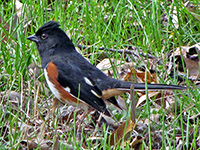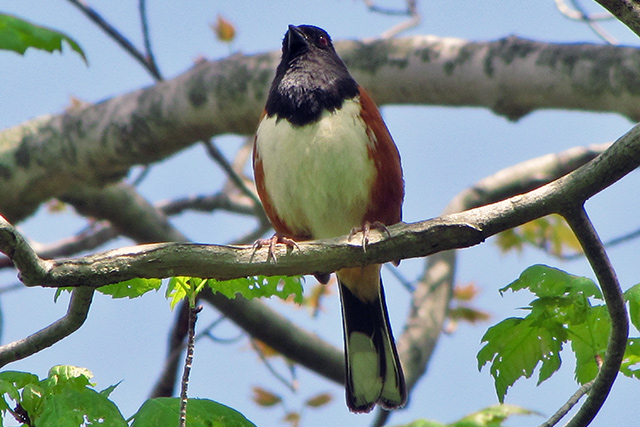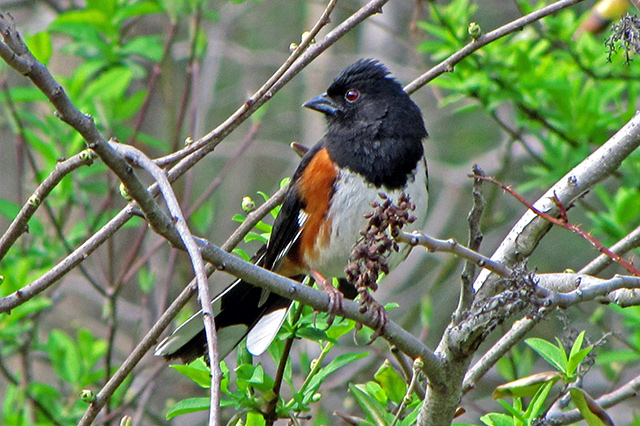|
|
 |
Photos
© Gary Myers Text by Ellen Katinas |

Eastern Towhee “Drink your teaaa!” If you hear this birdsong while strolling along the edge of a forest or old field, you may have to do a double take. This bossy bird isn’t easily seen. The Eastern Towhee sparrow is a “bird of the undergrowth,” preferring to forage for food among leaf litter or beneath thick underbrush. Although they do sing in the open, their stage of choice is usually a shrub or low tree, and you may only catch a glimpse of them through tangled stems. You may find it easier to hear one than to see one! Listen for rustling and scratching that are louder than you would expect for a little bird. The Eastern Towhee scratches up leaves using both feet at once in a backwards hop. If he sees you, he might send an alarm call to other birds, which unlike his tea-drinking song sounds like a rising “tow-hee!” They are worth the extra effort to glimpse them, because they are as pretty as calico kittens, with black backs and breasts, reddish sides, and white bellies. They are bigger and heavier than song sparrows, with a sparrow’s typical triangular beak. Year round, they can be seen in the Southeastern United States. For breeding in summer, they may go North, although they remain on the continent’s eastern edge. Eastern Towhees are omnivores, enjoying snails and spiders as much as seeds, fruit, and flower buds. They don’t drink tea! Their population rose mid-20th century as farming decreased and people let their fields grow. Nonetheless, construction and the overtaking of shrub lands by forests have rendered the landscape less suitable for Eastern Towhee sparrows. |
Home | Upcoming Events | About Us | Resource Issues | News | Local Contacts Maps | Photos | Publications | Youth Education | FAQ's | Links | Membership |






